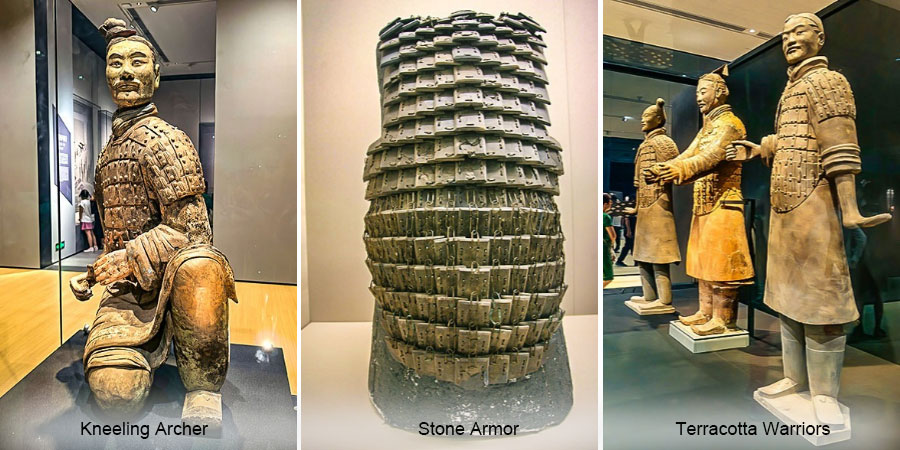On the 50th anniversary of the discovery and archaeological excavation of
Terracotta Army, a new permanent exhibition is opened to public at the museum since September 8th, 2024. With a great number of undisclosed collections from the Terracotta Warriors pits and subordinate tombs, supplemented by technological means, the lost underground kingdom and the court of China’s first emperor –
Emperor Qin Shi Huang is uncovered.
 Discovery of Terracotta Army in 1974
Discovery of Terracotta Army in 1974 Valuable Historical Relics Shown For the First Time
It’s arranged on 2F of the exhibition hall next to
Pit 2 at Terracotta Army Museum. There are 230 pieces of historical relics excavated in the past 50 years are on display, including the rare colorful Terracotta Warriors, bronze wares, gold and silver artifacts, and weapons of
Qin Dynasty (259 - 210 BC). These are all fine and representative items unearthed from the mausoleum complex, while you can find that you never see them before as one-third of them are exhibited for the first time.
Miraculously, you could see the
terracotta kneeling archer with
green-painted face, the headless terracotta warrior with purple sleeves, color-painted head of terracotta warriors, stone armor, bronze tripods, bronze cranes, gold and silver camels, gold dancing figure, etc.
Unveil the Buried Mystery of Qin Shi Huang Mausoleum
There’s no longer only the impressive pits with Terracotta Army and bronze chariots & horses can be seen in the Terracotta Army Museum. Large sand tables, archaeological models, digital interactions, immersive experience, and of course a variety of unearthed relics are utilized to show the historical site of
Qin Shi Huang Mausoleum. It seems that the scenes more than 2,000 years ago come alive and these items tell you the dust-laden history. Focus on the composition of Qin Shi Huang Mausoleum, this exhibition shows the overall layout of mausoleum, royal burial system, rituals, the court life, etc. at that time.
With 8 parts in total, a glimpse of the economy, military, art, entertainments, and every aspect of Emperor Qin Shi Huang & the social outlook at that great era is caught.
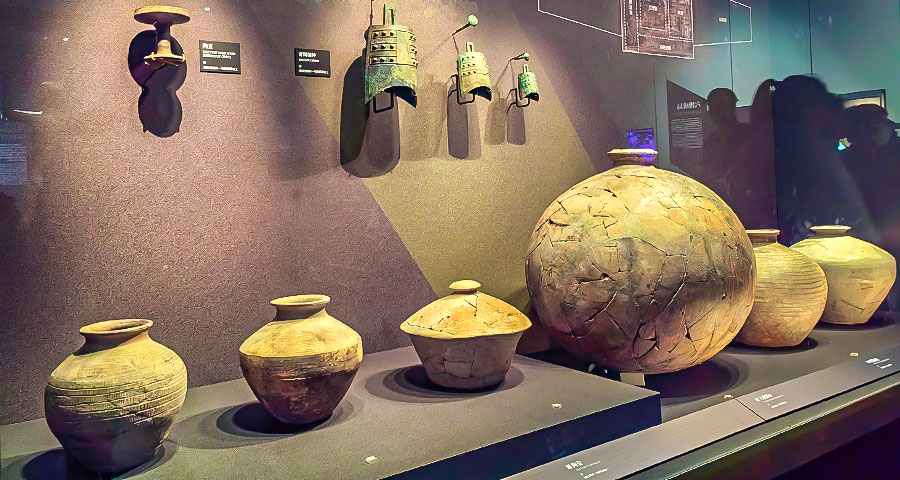 |
| Unearthed Wares around Qin Shi Huang Mausoleum |
Part 1: Emperor Qin Shi Huang
The legendary life of Emperor Qin Shi Huang, the first emperor of China, and the rise of Qin Dynasty is introduced, with many early artifacts like pottery.
Part 2: Construction of the Mausoleum
It’s shown that Qin Shi Huang Mausoleum was built under the principles of “a mausoleum should be like a capital city” and the supreme power of an emperor. Funeral rituals of “treating the dead as if they were alive” are also reflected.
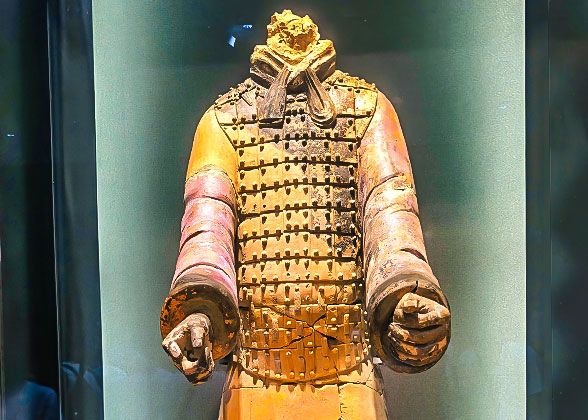 | | Terracotta Warrior with Purple Sleeves | | 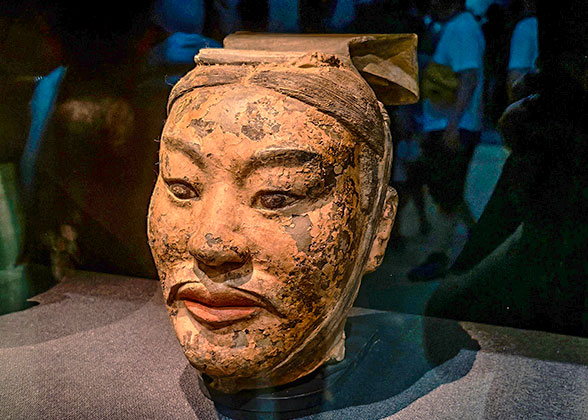 | | Color-Painted Head of Terracotta Warriors | |
Part 3: Palaces and Officials
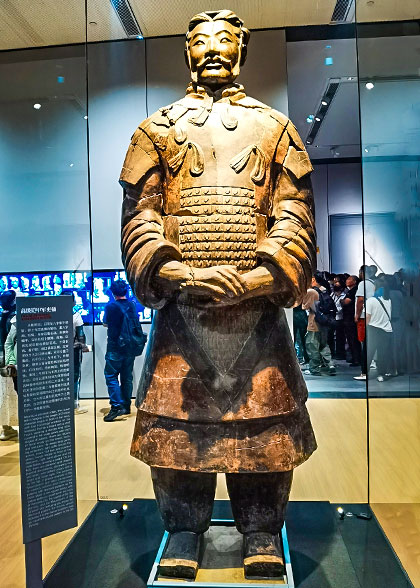 |
| Terracotta Senior General |
The ruins that are believed to be palaces or government offices and unearthed relics on these occasions are verified and illustrated via historical documents as well as archaeological exploration.
Part 4: Underground Legion
It’s the highlight of this exhibition, with a lot of Terracotta Warriors and Horses & weapons used in Qin Dynasty on show. More information behind these terracotta warriors are explained, especially the process to make and paint the terracotta figures.
Rare terracotta generals, with clear exquisite patterns on their clothes, come out there. Some terracotta warriors are preserved with conspicuous colors, such as the heads with pink lips, looking like wearing lipstick; the headless terracotta warrior attracts everyone's attention, as his sleeves are purple. In addition, the old bronze weapons on show are still glittering - thanks to the incredible rust prevention in ancient China.

Read more about
How the Terracotta Warriors were Made Top 10 Weapons of Terracotta Army 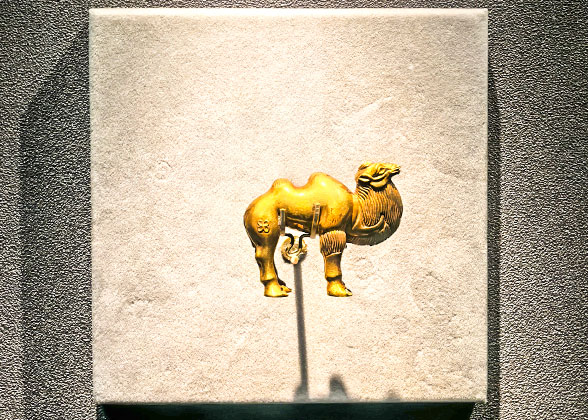 | | Golden Camel | | 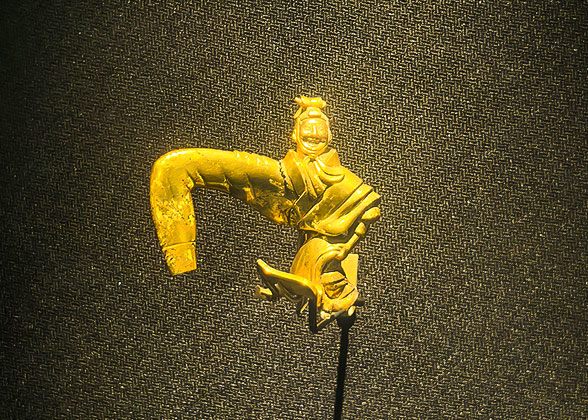 | | Gold Dancing Figure | |
Part 5: Rare Birds and Animals
The scene of imperial stables is restored, which was a simulation underground of the real stables in the capital. Rare birds, animals, a flocks of fowls, and a large drove of horses were bred there. The lifelike bronze cranes in various poses, such as craning down the beak to peck a worm or tiddler, are very eye-catching in the exhibition hall.
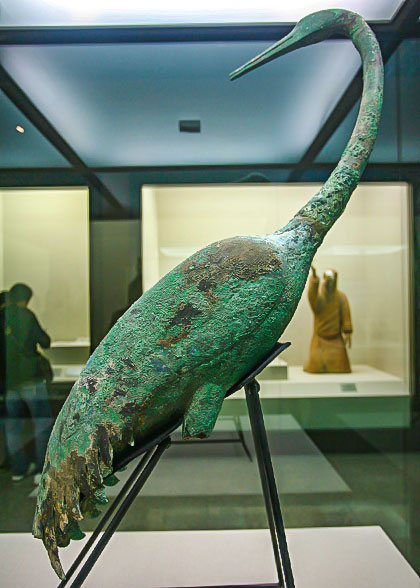 |
| Bronze Crane |
Part 6: Entertainment in the Court
Even it was over 2,000 years ago, the court life was luxurious with colorful entertainment activities. The little gold figure of dancer gets the most attention for the perfect craftsmanship.
Part 7: Serving as He was Alive
Mausoleum of Qin Shi Huang was constructed in strict funeral rituals, as the tombs of lower-ranking family members were not far away from the main tomb of Emperor Qin Shi Huang. Meanwhile, countless wares were buried with the dead.
Part 8: Mysterious Underground Palace
The underground palace of Qin Shi Huang Mausoleum is still unbeknown for high difficulty to excavate beyond your imagination. However, according to the historical records and what has been known from archaeological explorations, the grand view of the underground palace is emerged via high techniques.

Recommended Tours with a visit to Terracotta Army:
Terracotta Warriors Tour: One-day to visit Terracotta Warriors and Horses and more
More
Xi'an Tours
- Last updated on Sep. 26, 2024 by Nancy He -
 Discovery of Terracotta Army in 1974
Discovery of Terracotta Army in 1974 Read more about How the Terracotta Warriors were Made Top 10 Weapons of Terracotta Army
Read more about How the Terracotta Warriors were Made Top 10 Weapons of Terracotta Army Recommended Tours with a visit to Terracotta Army:
Recommended Tours with a visit to Terracotta Army: